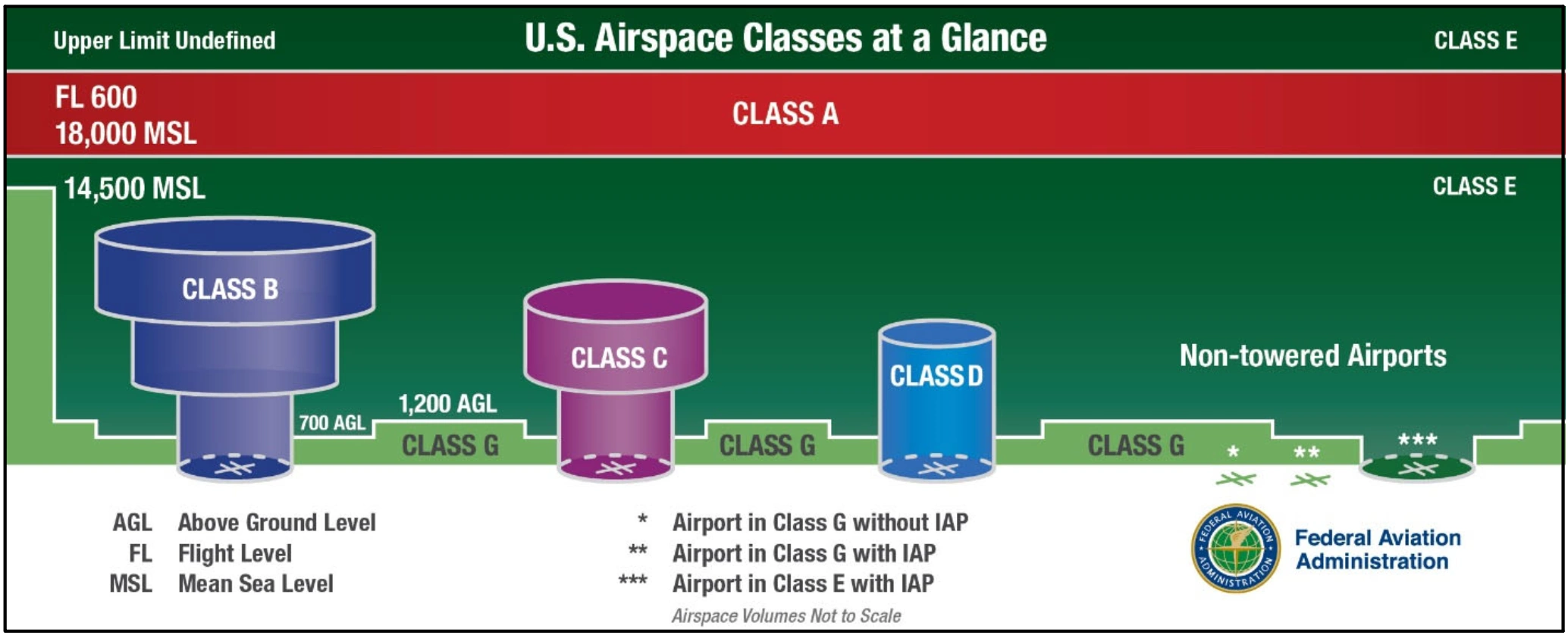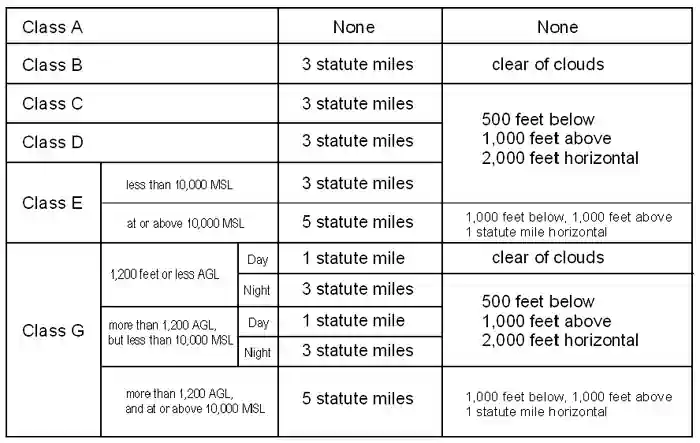class g airspace weather minimums
Yes it is possible to fly IFR in Class G airspace. 36 rows Class G.
1500 AGL and 3 SM.
. To fly in Class G airspace you will need a minimum of a student pilot certificate. Night except as provided in 91155b 3 statute miles. Weather Minimums in Class G Airspace.
Minimum allows Class G airspace 1 mile clear of clouds Answer. For aircraft other than helicopters. At or below 1200 AGL in Class G airspace during the day.
Above and 2000 ft. 0 to 179 degrees. When flying into an airport in Class G airspace communications should be established prior to 4 NM from the airport up to and including 2500 AGL.
Each pilot of an airplane must make all turns of that airplane to the left unless the airport. Class G 1200 to 10000 ft. Night except as provided in 91155 b 3 statute miles.
Class C airspace and Class D airspace are lumped together because the requirements are identical See Figure 4. Clouds 1000 ft above 1000ft below and 1SM horizontal. Depending on how high you fly and the time of day within Class G airspace your visibility requirement could range anywhere from 1SM to 5SM.
Horizontal clearance of clouds. 36 rows Notwithstanding the provisions of paragraph a of this section the following operations may be conducted in Class G airspace below 1200 feet above the surface. Class G Airspace Minimums.
Lets break the minimums down into three major categories. Must be within one half mile of airport. 14 CFR 91177 requires pilots to remain at least 1000ft above the highest obstacle within a horizontal distance of 4NM from the course indicated in the filed flight plan.
What minimum visibility and clearance from clouds are required for VFR operations in Class G airspace at 700 feet AGL or below during daylight hours. 1200 feet or less above the surface regardless of MSL altitude For aircraft other than helicopters. Because of this requirement time spent.
Class G 1200 feet or less above the surface regardless of MSL altitude. The basic VFR minimum visibility at night for Class G E D and C airspace below 10000 feet MSL is 3 statute miles. Day except as provided in 91155 b 1 statute mile.
Clear of clouds 1000 above 1000 above 1000 above. Class G Airspace Weather Minimums Helicopter Online. Cloud clearances range from clear of clouds to 1SM There are 6 sets of Class G weather minimums associated with various altitudes during the day or night.
The Flight Visibility minimums for both are. Class G surface to 1200 ft Day. 1 statute mile visibility.
Class G Airspace Explained Private Pilot Ground. Class G 1200 or less day. 1 mile visibility 500 feet below 1000 feet above and 2000 feet horizontal clearance from clouds.
Clear of clouds Night. Class G Is The Most Lenient And Confusing. 600 AGL and clear of clouds but must maintain 700 or below to use Class G minimums beware vertical obstructions and 9113 careless and reckless operation with pattern altitude below 1000 AGL Answer for the PRNFC.
Class G 1200 below 10K day. A Unless otherwise specified in the certificate holders operations specifications when conducting VFR helicopter air ambulance operations in Class G airspace the weather minimums in the following table apply. IFR 3 SM 3 SM 3 SM 3 SM 5 SM Day Night Day Night 5 SM 1 SM 3 SM 1 SM 3 SM Clouds.
1SM for day 3 SM for night. Class B 3 CoC. Odd thousands MSL 3000 5000 etc 180 to 359 degrees.
More than 1200 ft above surface but less than 10000 ft msl. However pilots are required to meet IFR altitude and flight level requirements. The standard basic VFR weather minimums at night in Class G airspace are 1 mile of flight visibility 500 feet below 1000 feet above and 2000 feet horizontally from clouds when below 1200 AGL.
Class CDE below 10KG below 10K at night. Class G airspace is typically the airspace very near the ground 1200 feet or less beneath class E airspace and between class B-D cylinders around towered airstrips. Even thousands MSL 2000 4000 etc When approaching to land at an airport without an operating control tower in Class G airspace.
G night 3 statute miles 152 4500 below 41000 above 42000 horizontal G day 1 statute mile 152 4500 below 41000 above 42000 horizontal G night 3 statute miles 152 4500 below 41000 above 42000 horizontal G day 1 statute mile Clear of clouds Below 1200 AGL 1200 AGL or higher 3 statute miles 152 4500 below 41000 above 42000 horizontal Below 10000 MSL. IFR Altitudes below 18000. Im Kenny Keller the creat.
Cloud clearance minimums of 1000 feet above 1000 feet below and 2000 feet horizontally. More than 1200 ft above surface and at or above 10000 ft msl. Here is what to know.
12 rows VFR Minimum Visibility Below 10000 MSL. A helicopter may be operated clear of clouds in an airport traffic pattern within 12 mile of the runway or helipad of intended landing if the flight visibility is not less than 12 statute mile. There is no formal separation is provided so each pilot is responsible to see and avoid other traffic.
1 mile visibility and clear of clouds. Day except as provided in 91155b 1 statute mile. Airspace Weather Minimums Basic VFR PPGS.
The weather minimums in Class G airspace vary based on altitude whether it is day or night and proximity to an airport. This is the weather minimums at class G. To help with that Ive created a stripped down mnemonic of each airspace and its corresponding vfr weather minimums.
Actually after looking at this I think we can make this easier. 1 1200 feet AGL and lower. Visibility and cloud clearance requirements at night for to landing if TPA is 1000 AGL.
Class G minimum weather requirements exist so that you can see and avoid other aircraft and stay out of the clouds. Cloud 1000ft above 500ft below 2000 ft horizontal. An exception to that minimum is when below 1200 feet above the surface and the visibility is at least 1 but less than 3 statute miles.
135609 VFR ceiling and visibility requirements for Class G airspace. Day ½ statute mile. 10000 feet MSL or higher 5 sm visibility.
500 feet below 1000 feet above 2000 feet horizontal. Cloud Clearance Standard VFR Minima means 3 SM visibility 500 ft. Class A NO VFR.

Pa I E S1 Vfr Weather Minimums Youtube

Helicopter Instrument Procedures Part Three
How To Remember Vfr Weather Minimums Bobbie Lind

Airspace Visibility Requirements Diagram Quizlet
How To Remember Vfr Weather Minimums Bobbie Lind
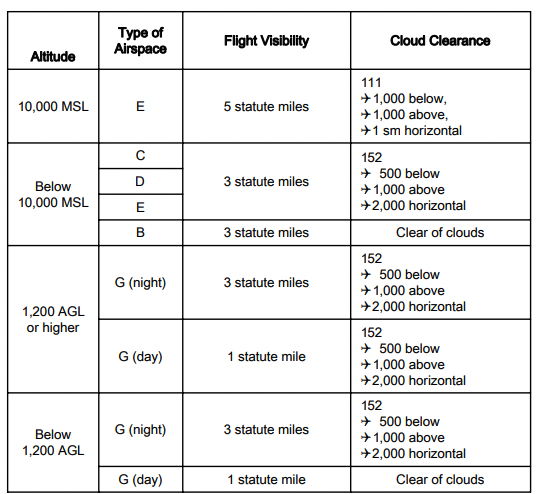
Ifr Vs Vfr In Aviation Understanding The Differences Pilot Institute
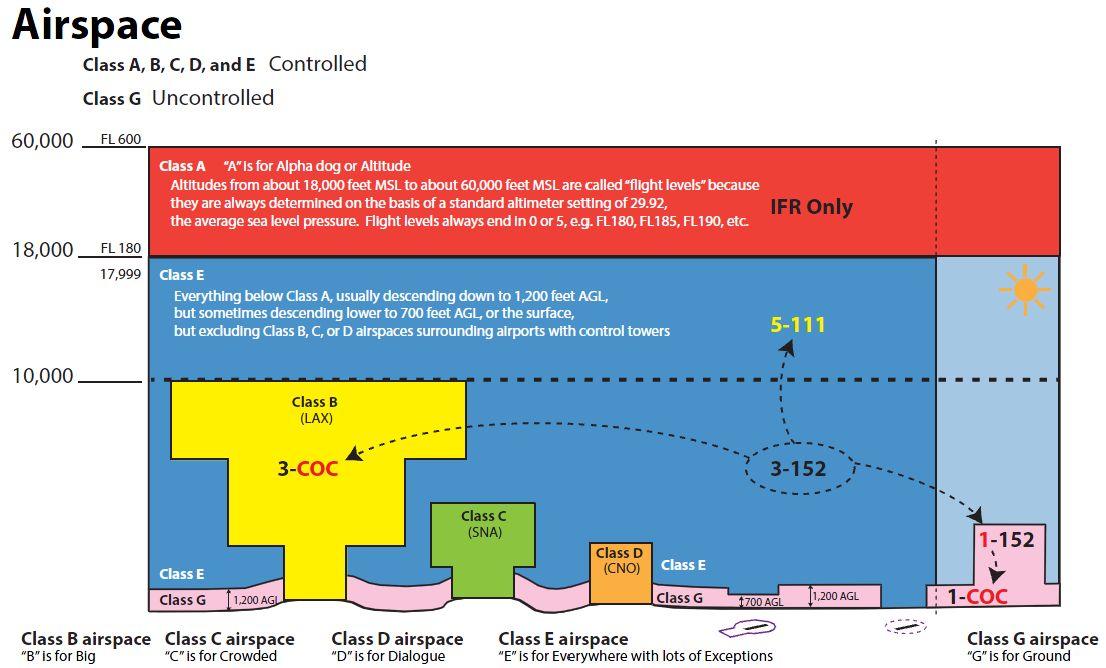
Memorizing Vfr Minimums Pilots Of America
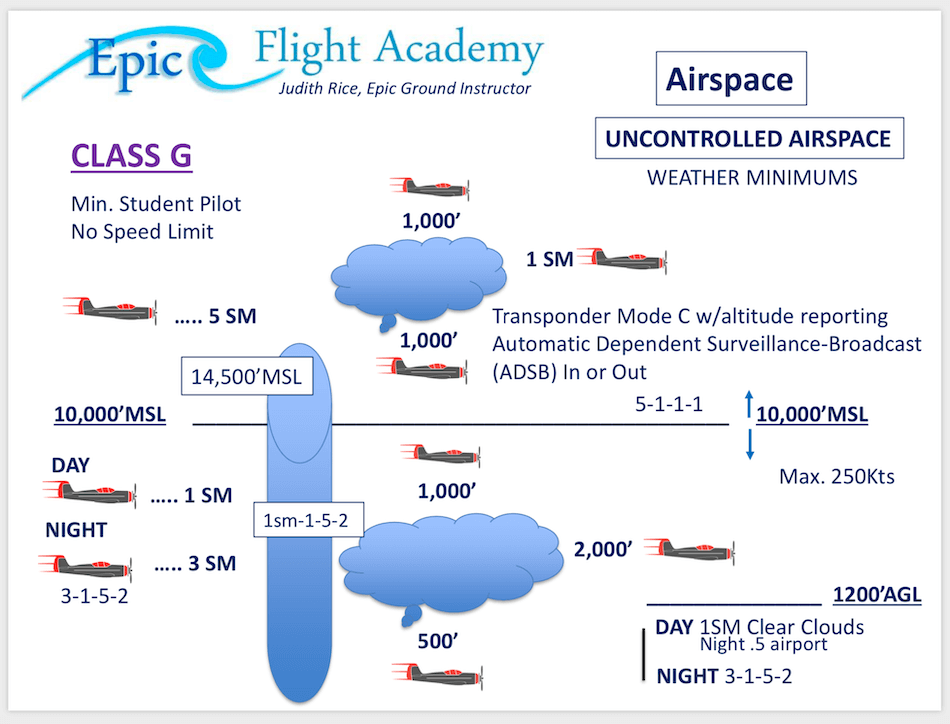
Airspace Classes And Special Use Airspace Everything There Is To Know

Faa Airspace For Vfr Flight Youtube
How To Remember Vfr Weather Minimums Bobbie Lind

This Is How Class G Airspace Works Boldmethod
How To Remember Vfr Weather Minimums Bobbie Lind
Regulations Vfr Minimums Learn To Fly Blog Asa Aviation Supplies Academics Inc

This Is How Class G Airspace Works Boldmethod
Vfr Weather Minimums Cancel Ifr Darren Smith Flight Instructor Cfi Homepage

